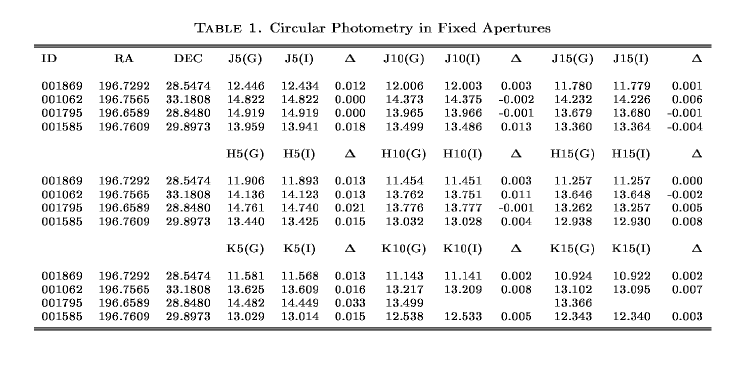Fixed Aperture Circular Photometry
The first photometry we did, as a sanity check, was to compare the IRAF STSDAS results with the GALWORKS results for the 5, 10, and 15 pixel circular apertures. In running the IRAF ellipse fitting in this case we fixed the galaxy center and called both the ellipticity and position angle zero. Table 1 shows the results of this comparison for the J, H, and K images in each of the three vertical sections respectively. The first three columns in the tables are the ID numbers and the RA and DEC (epoch 2000), respectively. The fourth, fifth, and sixth columns are the GALWORKS magnitude in a 5 pixel radius aperture, the IRAF magnitude and the difference between the two. The following three columns contain the same information for a 10 pixel radius aperture and the final three columns are for a 15 pixel radius aperture. You can see that the differences in photometry are small, <2% , but they are not zero. The reason for the differences is the inclusion of fractional pixels in the GALWORKS routine while IRAF keeps the whole pixel if half or more is in the aperture and otherwise rejects it. We confirmed the fractional pixel effect by performing circular photometry using the IRAF routine PHOT, which uses fractional pixels. Comparing PHOT to GALWORKS, the aperture areas and integrated fluxes were identical. Finally, galaxy 1795 does not have measurements from IRAF for apertures larger than 5 pixels at K because the galaxy is very close to the edge of the image so IRAF did not behave very well out beyond that radius.

Tom Jarrett
Thu Feb 6 16:44:06 PST 1997


